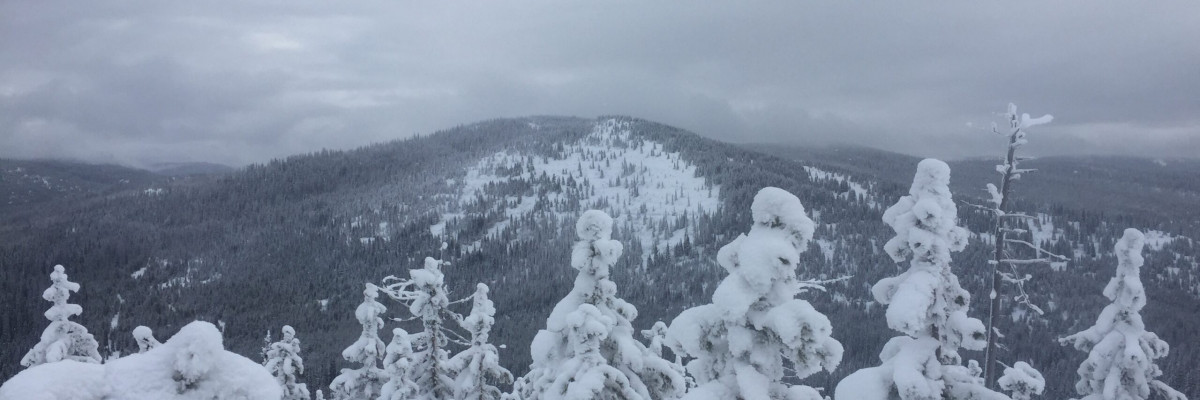The current avalanche danger is LOW in the west central Montana backcountry. Generally safe avalanche conditions. Watch for unstable snow on isolated terrain features.
Good morning, this is Travis Craft with the West Central Montana Avalanche Center’s avalanche advisory for December 06, 2018. This danger rating does not apply to operating ski areas, expires at midnight tonight and is the sole responsibility of the U.S. Forest Service.
Weather and Snowpack
Mountain temperatures range from -6 F to 6 F in the region. In the Bitterroot winds are 10 mph with gusts of 14 mph out of the SSE. In the northern part of the advisory area, winds are reading 13 mph with gusts of 15 mph out of the WSW. The forecast area received 0 to 1 inch of new snow in the last 24 hours.
The forecast area has a relatively shallow snowpack ranging from 2 to 3 feet of snow. The upper elevations have the most snow and are where you may encounter isolated avalanche problems.
The primary concern is wind slabs. The forecast area received strong winds over the last couple of days drifting snow on ridgelines and leeward slopes. Look for smooth and rounded deposits of snow and avoid wind drifted snow in steep terrain. Early season obstacles can increase the consequences of an avalanche.
The second problem is persistent slabs. The cold temperatures have weakened the snowpack. There is a crust with weak snow above and below it throughout our forecast region. It has not been reactive yet in our tests. Dig a pit to the ground and identify the weak layers. These layers will become a concern with more snow in the upcoming week.
Overall we have safe avalanche conditions. Remember that the shallow snow will increase the risk of trauma if caught in a slide as more rocks, stumps, and down trees will be exposed in the slide path. Use normal caution, continue to keep your guard up and look for any signs of snow instability. Evaluate snow and weather conditions as you travel.
Avalanche and Weather Outlook
High pressure moves into the area with valley inversions today and through the weekend. The next chance for precipitin looks like Saturday. The high pressure will keep the avalanche danger the same. Click here for the backcountry forecast.
If you do make it out into the hills feel free to share what you see on our public observations page. They are not only helpful to your community but extremely helpful to us, especially this time of year as data is sparse, conditions are variable and rapidly changing.
Join us tonight for an avalanche awareness night. Click here for details.
Logan will issue the next forecast on Saturday, December 08, 2018.
Ski and ride safe.














